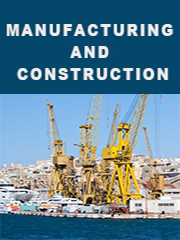Report overview
Automated Liquid Handlers is used in automation of Pharmaceutical or biochemical laboratories. It is a robot that dispenses a selected quantity of reagent, samples or other liquid to a designated container.
Reducing processing time, decreasing sample contamination, and increasing accuracy in bioassays is possible with Automated Liquid Handler. These systems release researchers from long, repetitive, laborious tasks, and free up time for other assays, lab reports and other lab duties. Robotic arms distribute accurate measurements of liquids to vessels, such as microtiter plates and change out plates or tubes, thus streamlining workflow.
This report aims to provide a comprehensive presentation of the global market for Automated Liquid Handler, with both quantitative and qualitative analysis, to help readers develop business/growth strategies, assess the market competitive situation, analyze their position in the current marketplace, and make informed business decisions regarding Automated Liquid Handler. This report contains market size and forecasts of Automated Liquid Handler in global, including the following market information:
Global Automated Liquid Handler Market Revenue, 2018-2023, 2024-2029, ($ millions)
Global Automated Liquid Handler Market Sales, 2018-2023, 2024-2029, (Units)
Global top five Automated Liquid Handler companies in 2022 (%)
The global Automated Liquid Handler market was valued at US$ 907.5 million in 2022 and is projected to reach US$ 1275 million by 2029, at a CAGR of 5.0% during the forecast period. The influence of COVID-19 and the Russia-Ukraine War were considered while estimating market sizes.
Global Automated Liquid Handler key players include Tecan, Hamilton Robotics, Thermo Fisher Scientific, Beckman Coulter, PerkinElmer, etc. Global top five manufacturers hold a share over 40%.
Asia-Pacific is the largest market, with a share about 35%, followed by North America, and Europe, both have a share about 60 percent.
In terms of application, the largest application is Bio or pharmaceutical Companies, followed by Teaching or Scientific Research Institutions, Medical System, Government Agencies, etc.
We surveyed the Automated Liquid Handler manufacturers, suppliers, distributors and industry experts on this industry, involving the sales, revenue, demand, price change, product type, recent development and plan, industry trends, drivers, challenges, obstacles, and potential risks.
Total Market by Segment:
Global Automated Liquid Handler Market, by Type, 2018-2023, 2024-2029 ($ Millions) & (Units)
Global Automated Liquid Handler Market Segment Percentages, by Type, 2022 (%)
Basic
Advanced
Global Automated Liquid Handler Market, by Application, 2018-2023, 2024-2029 ($ Millions) & (Units)
Global Automated Liquid Handler Market Segment Percentages, by Application, 2022 (%)
Bio or pharmaceutical Companies
Government Agencies
Medical System
Teaching or Scientific Research Institutions
Global Automated Liquid Handler Market, By Region and Country, 2018-2023, 2024-2029 ($ Millions) & (Units)
Global Automated Liquid Handler Market Segment Percentages, By Region and Country, 2022 (%)
North America
US
Canada
Mexico
Europe
Germany
France
U.K.
Italy
Russia
Nordic Countries
Benelux
Rest of Europe
Asia
China
Japan
South Korea
Southeast Asia
India
Rest of Asia
South America
Brazil
Argentina
Rest of South America
Middle East & Africa
Turkey
Israel
Saudi Arabia
UAE
Rest of Middle East & Africa
Competitor Analysis
The report also provides analysis of leading market participants including:
Key companies Automated Liquid Handler revenues in global market, 2018-2023 (Estimated), ($ millions)
Key companies Automated Liquid Handler revenues share in global market, 2022 (%)
Key companies Automated Liquid Handler sales in global market, 2018-2023 (Estimated), (Units)
Key companies Automated Liquid Handler sales share in global market, 2022 (%)
Further, the report presents profiles of competitors in the market, key players include:
Hamilton Robotics
Beckman Coulter
Tecan
Thermo Fisher Scientific
PerkinElmer
Agilent
Labcyte
Eppendorf
Aurora Biomed
BioTek Instruments
Tomtec
Apricot Designs
Analytik Jena
BRAND
AMTK
Gilson
Hudson Robotics
Beijing TXTB
D.C.Labware
Outline of Major Chapters:
Chapter 1: Introduces the definition of Automated Liquid Handler, market overview.
Chapter 2: Global Automated Liquid Handler market size in revenue and volume.
Chapter 3: Detailed analysis of Automated Liquid Handler manufacturers competitive landscape, price, sales and revenue market share, latest development plan, merger, and acquisition information, etc.
Chapter 4: Provides the analysis of various market segments by type, covering the market size and development potential of each market segment, to help readers find the blue ocean market in different market segments.
Chapter 5: Provides the analysis of various market segments by application, covering the market size and development potential of each market segment, to help readers find the blue ocean market in different downstream markets.
Chapter 6: Sales of Automated Liquid Handler in regional level and country level. It provides a quantitative analysis of the market size and development potential of each region and its main countries and introduces the market development, future development prospects, market space of each country in the world.
Chapter 7: Provides profiles of key players, introducing the basic situation of the main companies in the market in detail, including product sales, revenue, price, gross margin, product introduction, recent development, etc.
Chapter 8: Global Automated Liquid Handler capacity by region & country.
Chapter 9: Introduces the market dynamics, latest developments of the market, the driving factors and restrictive factors of the market, the challenges and risks faced by manufacturers in the industry, and the analysis of relevant policies in the industry.
Chapter 10: Analysis of industrial chain, including the upstream and downstream of the industry.
Chapter 11: The main points and conclusions of the report.
